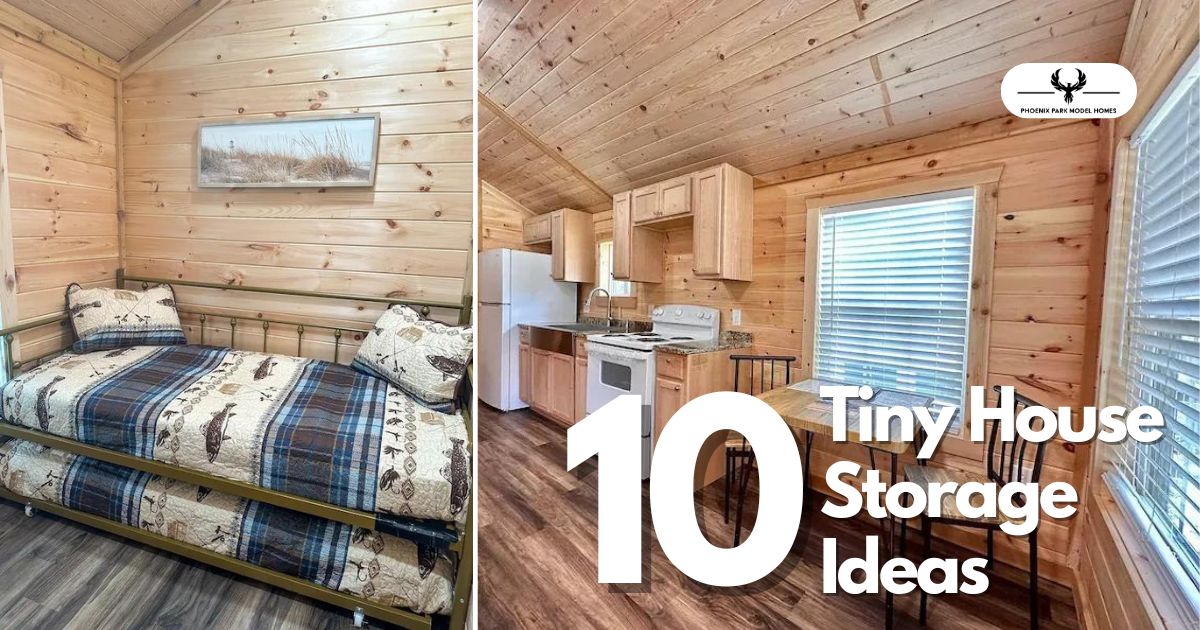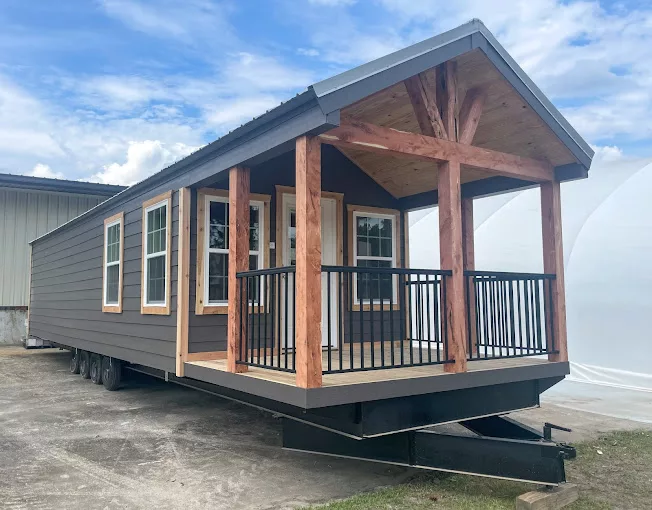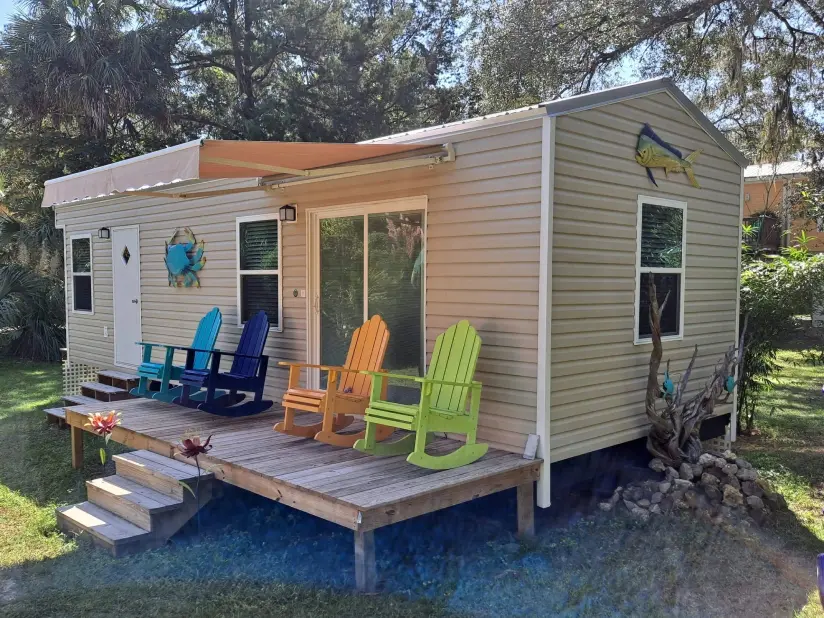Be honest and answer how often you have been confused between an RV and a park model home. While they have distinct differences, one can easily differentiate them by appearance.
While park models resemble traditional homes with larger, stationary structures and permanent-like appearances, RVs feature compact, mobile designs optimized for travel with sleek exteriors and easy towing capabilities.
This blog will discuss the park model vs. RVs in-depth, pinpointing their distinct features and key differences.
Key Differences
- Park models are stationary and customizable for long-term stays – RVs are built for mobile, frequent travel.
- Park models resemble homes and are anchored (can be moved) – RVs are compact, and designed for easy towing.
- Subject to different regulations: park models in zoned areas – RVs under travel rules.
- Park models offer up to 400 sq. ft. of living space – RV sizes vary with space-efficient designs.
What are Park Models?
Park models, also referred to as tiny homes or park trailers, are compact, stationary structures that resemble traditional homes but are built on a chassis for mobility. These tiny homes are built under ANSI 199.5 code usually ranging from 320 to 400 square feet (can’t exceed 400 sq. ft) and are intended for long-term stays in designated communities.
Unlike RVs, park models are not meant for frequent travel but serve as semi-permanent residences or vacation homes.
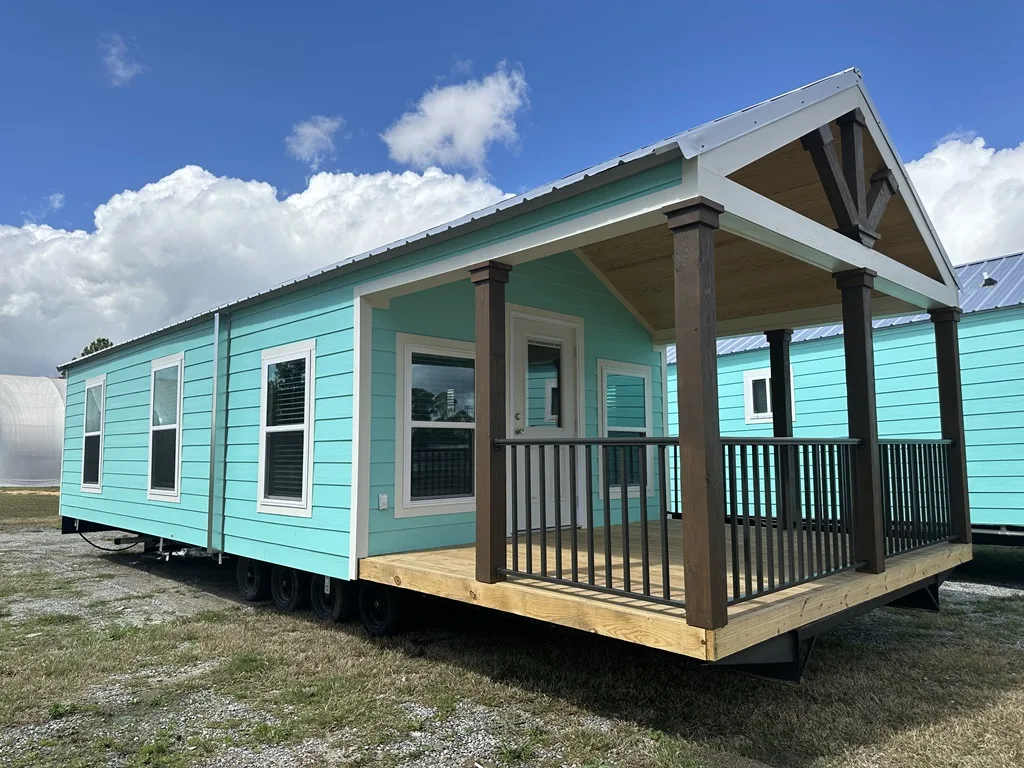
A Full House series park model by Phoenix
Key Features of Park Models
Size and Layout
Park Models offer more spacious interiors than standard RVs. They have distinct living areas, separate bedrooms, and full-sized amenities such as kitchens and bathrooms.
This layout provides a comfortable living experience similar to traditional homes.
Stability
Park Models are anchored to the ground or placed on a permanent foundation, enhancing stability and durability.
This stationary nature ensures a more secure living environment, ideal for individuals or families seeking a sense of permanence.
Customization
Owners can personalize Park Models to suit their preferences, incorporating personal touches and upgrades similar to traditional home renovations.
This unique flexibility empowers you to create a living space tailored to your needs and tastes.
At Phoenix, we offer a range of design options to choose from to customize your Park model to make it uniquely yours.
Regulations
Park Models are subject to specific zoning and regulatory requirements. They are often restricted to designated parks or communities zoned for recreational vehicles.
These regulations may lead to size limitations, occupancy duration, and utility hookups.
Related: Where to Place a Park model?
Explore compact, customizable park models for comfortable, semi-permanent living from Phoenix Park Models
What are RVs?
Recreational Vehicles (RVs) encompass motorhomes, travel trailers, and camper vans intended for mobile living and travel. Unlike park models, RVs are built on a motorized chassis or towable trailer for greater mobility and flexibility in exploring various destinations.
RVs cater to diverse needs, from retirees on cross-country adventures to travel lovers seeking sophisticated travel experiences.
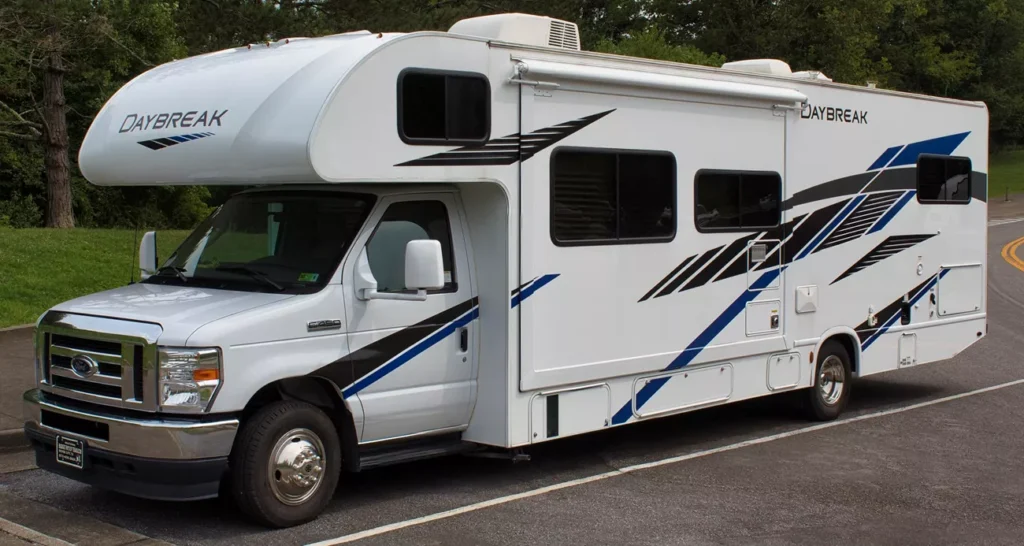
Key Features of RVs
Mobility
With its excellent mobility, the RV offers the flexibility to travel and explore different locations without any constraints.
Whether for a weekend getaway or an extended road trip, RVs allow you to enjoy diverse landscapes and cultures without the limitation of a fixed location.
Compact Design
RVs are known for their compact yet efficient design with space-saving features optimized for live-on travel.
These structures often include convertible furniture, collapsible fixtures, and clever storage solutions to maximize living space within a confined footprint.
Versatility
RVs are not one-size-fits-all. They come in various sizes and configurations, designed to cater to diverse travel preferences and group sizes.
From compact camper vans for the solo adventurer to spacious Class A motorhomes for large families, an RV model perfectly aligns with your lifestyle and budget.
Onboard Amenities
Modern RVs offer a range of onboard amenities, including kitchens, bathrooms, entertainment systems, and climate control options.
While these features may be more compact than Park Models, they provide essential comforts for life on the road.
The difference in Park Model vs RV
| Feature | Park Models | RVs |
| Mobility | Stationary, not intended for frequent travel | Designed for mobility, suitable for travel and exploration |
| Size | Typically larger, ranging from 320 to 400 square feet | Compact design, varying sizes from small to large |
| Layout | Spacious interiors with distinct living areas | Efficient use of space, often with convertible features |
| Stability | Anchored to the ground or placed on a permanent foundation | Mobile, built on a chassis for on-the-road stability |
| Customization | Can be customized to suit individual preferences | Limited customization options, standardized layouts |
| Regulations | Subject to specific zoning and regulatory requirements | Governed by transportation regulations and campground rules |
| Ideal Use | Long-term stays in RV parks or designated communities | Traveling, exploring different destinations |
Related: Park model VS Tiny homes
FAQs
1. Is a Park Model Considered an RV?
Park Models are considered recreational vehicles but differ in use and legal classifications. Unlike RVs, which are built for travel, Park Models are larger, semi-permanent structures designed for long-term stays in designated areas.
They have distinct zoning and regulatory requirements, emphasizing their role as semi-permanent residences.
2. Park model vs Destination trailer: Are they the same?
Park models and destination trailers are almost similar but the key difference is that Park models connect to residential utilities and lack standard holding tanks. In contrast, destination trailers are self-contained, utilizing either campground hookups or built-in tanks for flexibility.
Park models resemble homes and are less mobile, suited for longer stays. Destination trailers are smaller and designed for frequent travel.
3. Do park models stay longer than RVs?
Yes, park models typically stay longer in one location compared to RVs. While RVs are designed for mobility and frequent travel, park models are often semi-permanent structures intended for more extended stays in designated communities or RV parks.
Park models are typically used as vacation homes or seasonal residences, offering more space and amenities for extended living than traditional RVs.
In conclusion, park models are best suited for long-term living with a home-like feel, while RVs are ideal for travel and versatility, offering mobility and compact living solutions. Choose the one that suits you best and start living the tiny lifestyle you have been longing for.






